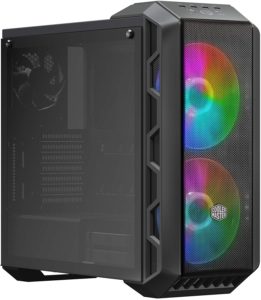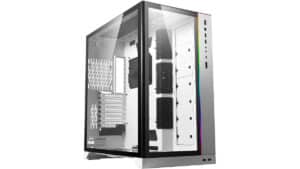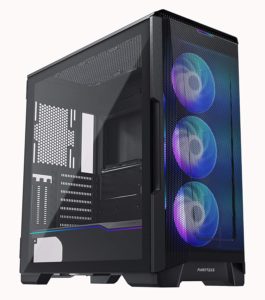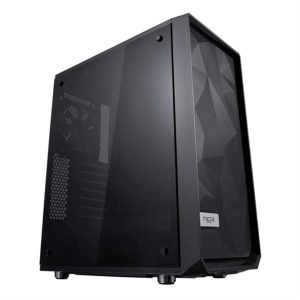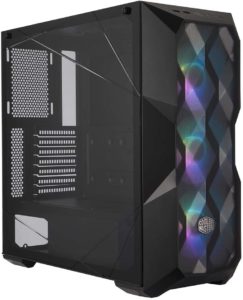Best Airflow PC Case in 2025
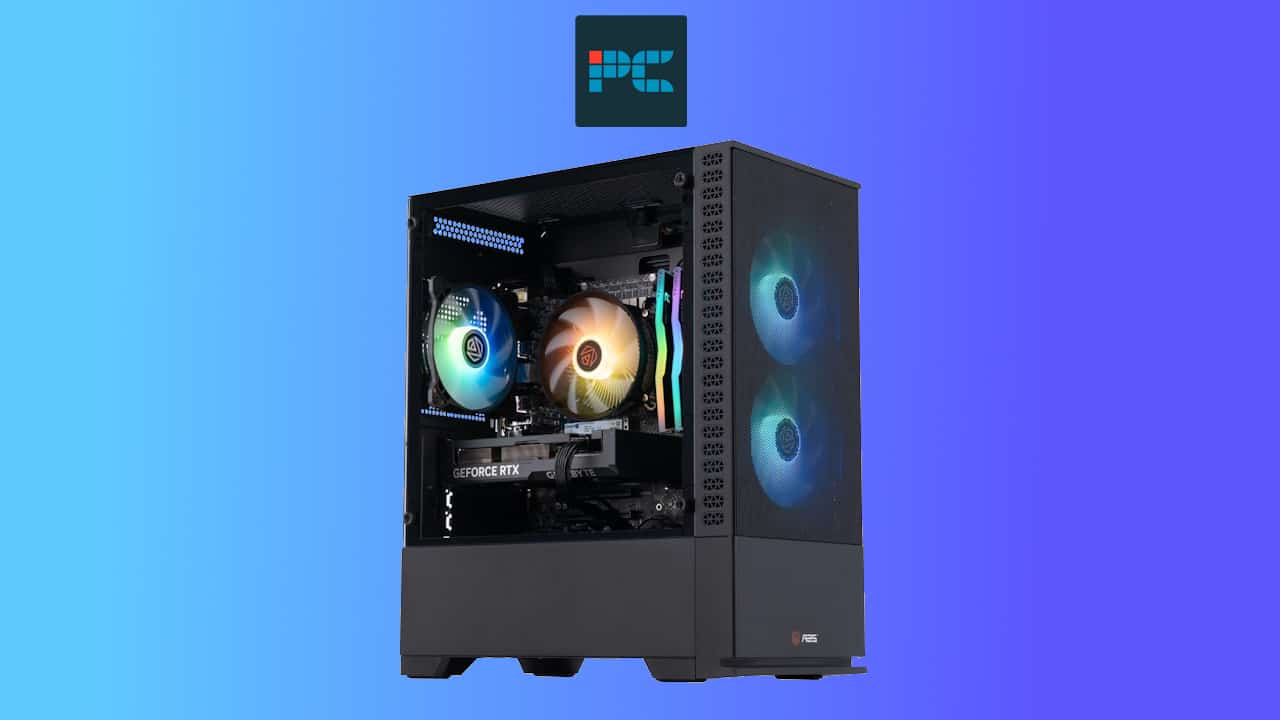
Table of Contents
Aside from choosing the right components, no gaming rig is complete without proper cooling, and that’s when finding the best airflow PC case is essential. As the hardware churns away, powering the most demanding games, it produces substantial heat that needs keeping in check to avoid throttling or, worse, permanent damage.
When talking about cooling, the case’s airflow comes front and center. Good airflow ensures enough space to properly manage the intake of cool, fresh air while expelling hot air for the best thermal environment for the PC to perform optimally. Another added benefit of proper airflow is better acoustic performance as fans whirr at a slower speed, significantly lowering the noise they produce.
Today, we’re focusing on PC cases with high airflow designs and rounding up the best of those currently available out there. By design, these cases tend to offer larger footprints, more built-in fans, mounts, and mesh panels – all features conducive to better temperature management when combined correctly.
Products at a Glance
How we picked
When assessing the spread of airflow-specific PC cases out there, there are several factors to consider: price, stock fan quality and size, internal space, build quality, the range and location of fan mounts, panels type and materials, and, less important, but desirable features, such as cable management, aesthetics, I/O, and RGB lighting.
Our focus on these led us to five airflow PC cases that combine them to offer admirable airflow performance. Below, you’ll find a brief review of each, which we’ve earmarked based on where they shine, whether that be value, size, suitability to different cooling solutions, and more.
We’ve also added a few choice points to consider when shopping around for a case with good airflow potential. These should help you avoid any pitfalls and land on an airflow case that suits your needs. Without wasting any more time, let’s jump in.
Product Reviews
- Affordable
- Two front panel options
- Excellent thermals
- 200 mm pre-installed fans
- Plastic case handle
Stylish, versatile, and conducive to keeping hardware running cool, the mid-tower ATX Cooler Master H500 wins out as our pick for the best airflow PC case, mixing in incredible value for around $100.
The highlight is the inclusion of two beefy 200 mm pre-installed RGB fans on the mesh front panel (Cooler Master also includes a solid transparent panel to give builders options). Larger than the usual 120/140 mm equivalents, they excel at pumping in fresh air and are a core part of what makes such a high performer when it comes to airflow. The back comes pre-installed with a 120 mm fan too.
There’s also plenty of space for fans with an array of mounts – two on the top, one on the rear, and three on the front if you swap out the 200 mm for 120/140 mm. The case also offers sufficient room for radiators of different sizes on the front, top, and rear. Front I/O includes two USB 2.0 and two USB 3.0, Audio In/Out, a reset twitch (doubling as an RGB controller), and activity LEDs.
The small things also work in the Cooler Master H500’s favor: 30 mm cable routing clearance behind the motherboard and a front cable cover allows for neat cable management that promotes good airflow; a good sized drive cage and a PSU half-shroud also work for a clean look while not trapping heat (there’s even space for two 2.5″ SSDs on the back of the motherboard); and dust filters on the front, top, and bottom.
We struggled to find much wrong with the Cooler Master H500, and the only criticism we mustered up was the plastic top-panel sitting case handle. We prefer a sturdier material, but with a build this size, it’s unlikely you’ll be carting it around daily, so this is truly a minor, almost negligible issue.
- Perfect for liquid-cooled setups
- Two-chamber design
- Modular
- Generous amount of fans mounts
- Pricey option geared towards enthusiasts
If you’re looking for a massive, enthusiast-geared full-tower E-ATX/ATX case capable of housing even the most ambitious liquid-cooled rigs, then the Lian Li O11 Dynamic XL stands out as an excellent choice.
Lian Li leverages the O11 Dynamic XL’s size with a creative two vertically-divided chamber design: one housing your CPU, GPU, and motherboard, and the other the PSU, drives, and cabling. With this, components aren’t jostling for the same space, and it’s all conducive to excellent cable management, which helps airflow immensely. The side-mounted drive bays, in particular, are a design feat thanks to a modular, hot-swappable design. Overall, there’s room for a dizzying mix of 10 SSDs/HDDs all in the secondary chamber behind the motherboard.
Unlike most airflow-geared cases, the Lian Li O11 Dynamic XL features a glass front panel rather than mesh, but an incredible array of fan mounts and ventilation holes throughout the case, and perforated panels on the side, rear, and base, each with magnetic dust filters counteract this. There’s space for one 120 mm fan on the rear, three 120 mm fans on the side, three 120 mm or two 140 mm on the base, and three 120 mm or two 140 mm on the top. You can also substitute these for radiators up to 360 mm in all these positions.
Other great features include eight expansion slots that support dual and vertically mounted GPUs, a front-facing I/O covering pretty much all bases, and screw-free panel locks. As you can imagine, the Lian Li O11 Dynamic XL’s spacious design allows for excellent GPU and CPU clearance, too.
The Lian Li O11 Dynamic XL oozes potential with its modular and spacious design, but it’s up to the builder to maximize it. Anyone looking for a case suited to complex, bespoke water cooling solutions will find endless satisfaction here. Naturally, this kind of flexibility comes at a premium, and the Lian Li O11 Dynamic XL retails at twice the price of most of the cases in our guide, at around $200.
- Integrated D-RGB lighting
- Three pre-installed 140 mm fans
- Excellent thermal performance
- Fan mounts and drive space
- Large chassis
Another excellent all-round airflow PC case, the mid-tower ATX Phanteks P500A Digital RGB shines with a sleek aesthetic complemented by top-shelf RGB lighting – performance meets style in a relatively affordable package.
A triplet of 140 mm D-RGB fans steals the show with a range of effects and colors that sync up with a software-free controller that works with some of the biggest motherboard manufacturers out there like MSI and ASUS. These sit alongside an ultra-fine 1mm sheet metal mesh front panel with an integrated dust filter, also found on the top and base.
The Phanteks P500A Digital RGB delivers excellent thermal performance with space inside for up to six 140 mm fans and seven 120 mm fans fitted on the front, top, and rear. Alternatively, there’s space for radiators up to 360 mm on the front and top. Other notable features include three SSD brackets behind the motherboard, two stackable HDD brackets, room for up to 10 3.5” drives, a riser cable for vertical GPU placement, and I/O with a decent range of USB, Audio, and LEDs.
For better or for worse, the Phanteks P500A Digital RGB has a large footprint, that as advertised by Phanteks, grants sufficient room for a 2-in-1 build, thanks to a separately-purchased mini-ITX dual system kit. While this might suit some, for example, hoping to shrink down two gaming/streaming systems to one for convenience, this is an unnecessary feature for most. Whether having that option is worth the extra chassis footprint is debatable, but keep all this in mind if you have little space to play in your home office/bedroom/gaming space.
- Compact design
- Great airflow
- Cable management
- Extra fans needed to get the most out of the case
If space is an important consideration, but you still need to house all the hardware of a larger full-tower build without sacrificing airflow, then the compact mid-tower ATX Fractal Meshify C is well worth the price, which incidentally remains entirely reasonable.
A neat angular mesh front panel paired with two pre-installed 120 mm fans and dust filters on the front, top, and base, and space for seven 120 mm fans throughout work together for an excellent airflow path from the front to the rear. While the Fractal Meshify C is compact, the open interior layout means it can handle anything you can throw its way. There’s also plenty of space for the larger GPUs and tall CPU coolers.
The Fractal Meshify C also packs in a lot of versatility with two 2.5″ or 3.5″ drives in a removable drive bay and three 2.5″ concealed SSDs mounts, a PSU shroud, and 35 mm clearance behind the motherboard for clean cable routing.
There’s next to nothing we can fault here, and the stylish looks certainly win points, as does the tempered glass side panel that offers a window into what will invariably be a tidy build. However, we recommend at least two additional fans to truly make the most of the ATX Fractal Meshify C excellent airflow potential.
- Great looks
- Three pre-installed 120 mm ARGB fans
- Value
- Limited behind-motherboard cable management
Last but not least, we repeatedly gravitated towards the mid-tower ATX Cooler Master TD500 Mesh as our top value airflow PC case. Similar in style to the Fractal Meshify C in its size and ambition, it’s generally available for less with the added benefit of three 120 mm front panel fans rather than two.
It’s clear Cooler Master pushed the envelope in terms of looks here; it didn’t skimp on airflow either – a polygonal mesh front panel is paired with three ARGB fans, and the case offers support for up to seven 120 fans on the top, front, and rear, or 360 mm radiators on the top and front. You’ll also find dust filters on the top, base, and front.
Component clearance is generous, as is the scope for expansion with seven expansion slots, a two-drive bay, and space for up to four 2.5″ drives. I/O is as you’d expect in this price range with a duo of USB 3.2 Gen 1, Audio In/Out, and ARGB controller.
Cooler Master appears to have cut some corners, though, most noticeable in the minimal behind-motherboard clearance. As such, good cable management is a bit more of a chore, but there’s still plenty of clips and holes to reach a decent result.
How to choose the best airflow PC case
There are many factors that should be considered when picking the best airflow PC case, so let’s take a look at some of the most important considerations you should make before purchasing.
Panel type
Gone are the days when front panels were clogged with chunky optical drives and hefty hard disc drive bays, gifting manufacturers and builders new real estate that can be put to use for better case airflow. In practice, this means using more porous materials such as mesh, which facilitates the intake or exhaustion of cold and hot air.
While arguably better for overall looks, solid material front panels will hamper good airflow unless they are fitted with features such as vents and perforations. Even then, solid front panels fall short compared to mesh, which allows for more or less unhindered air intake and better fan performance/lower noise levels due to requiring less power to draw in fresh air.
If possible, opt for a case with a mesh front panel pair with an easily accessible dust filter if you’re aiming for good airflow. We also recommend the same for top panels.
Fan Mounts and Correct Intake/Exhaust Positioning
A case decked out with six fans only delivers good airflow if the fans are rotated correctly and in the right positions. This partly comes down to mount positioning (front, top, back panels) on the case itself and their orientation – intake/exhaust positioning.
We suggest settling for at least three fan mounts for decent airflow, but a more demanding build will naturally require more. Fan size (generally 120 and 140 mm) isn’t so much of a concern for airflow but does affect noise levels. Smaller fans work harder to push air, raising the decibel output, but raw performance remains virtually identical.
As for orientation, manufacturers equip fans with arrows/stickers indicating the airflow direction. This is important as wrong orientation can result in scenarios where hot air isn’t being extracted or, conversely, cooler air isn’t pushed into the case. Pay attention to these when piecing a build together. Nothing quite saps the fun out of an exciting new PC than subpar temperature control or having to take it apart to re-orientate fans.
Form factor
It goes without saying that the motherboard size dictates the case’s size (especially if you are only upgrading the case and not the other hardware). Still, when given a choice, a larger ATX case isn’t imperative, although we recommend one if possible. The roomier insides certainly help temperature control, thanks to more space for components, cable management, and air to circulate. Small form factors are viable if you have limited space or prefer a more compact build, though.
Airflow is arguably more critical in a small form factor build due to identical heat generated in a tighter space, but a good setup can prove more than capable of handling even the most demanding applications. With a sufficient number of well-positioned fans, a well-designed mesh panel, and some decent cable management, it’s entirely possible to pick up a compact case with excellent airflow potential.
Does a bigger PC case mean better airflow?
Not necessarily. While having a bigger PC case does mean you can fit more fans and have more space between components, it doesn’t automatically guarantee better airflow.
Is it better to open your PC case for airflow?
No, not in most cases. Having a closed case will help direct airflow more efficiently.
Our Verdict
You can’t go wrong with the excellent Cooler Master H500, an ideal all-round cooling powerhouse fueled by two meaty 200 mm fans and plenty of options for different cooling arrangements.
For a liquid-cooled setup, you’d be hard-pressed to improve on the massive Lian Li O11 Dynamic XL. Versatile and modular, see it as a blank slate to bring your build to life, however ambitious it may be. If aesthetics and RGB light shows are an imperative feature, then the Phanteks P500A Digital RGB hits the spot with excellent airflow to boot.
As for a space-saving option, our eye is on the Fractal Meshify C, that despite a smaller footprint, offers all the thermal performance of large alternatives. Finally, for sheer all-round value, we suggest the Cooler Master TD500 Mesh, which, aside from stylish looks, also performs well when it comes to keeping things cool under the most demanding loads.
With that, we’ll wrap up our guide to the best airflow PC cases out there. Feel free to drop us a message in the comments section below if you have any questions.


